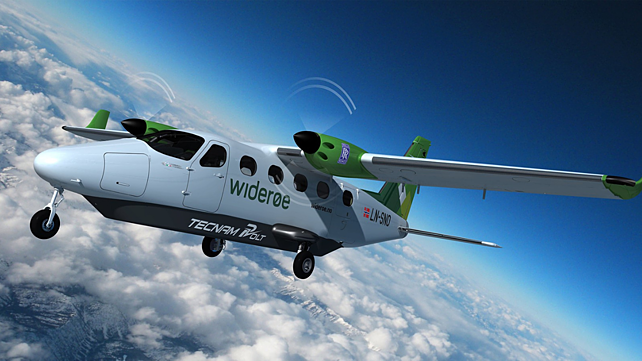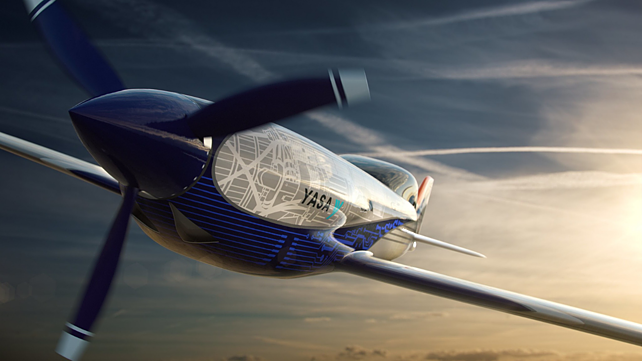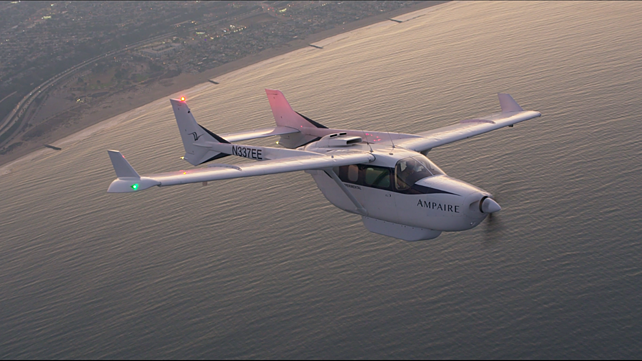
Efforts to demonstrate the feasibility and advantages of regional electric aviation transport are now well advanced and will ignite a fundamental shift in regional airline operations by the end of this decade. The electrification of commercial aviation aircraft will first start with regional transport aircraft having less than 20 seats and drive the creation of the necessary charging and energy storage infrastructure. These new classes of electric/hydrogen, autonomous vehicles and Urban Air Mobility offerings will transform how people and freight move from city to city.
Hybrid-electric and all-electric commuter aircraft are ideal for regional transport as most such flights are often for distances less than 275 km. Such aircraft are also suitable for urban mobility, where the flying time between destinations can be less than fifteen minutes. Hybrid-electric aircraft are similar to hybrid cars in that they use engine technologies that combine two sources of power, typically fuel and an electric battery or Hydrogen Fuel Cell, which provides substantially more energy and power for a given weight compared to a pure electric battery.
While hybrid-electric aircraft can reduce emissions by up to 70%, upcoming all-electric aircraft will deliver zero emissions. Electrification of aircraft will also eliminate the complexities and maintenance procedures associated with hydraulic, pneumatic, and gearbox-driven aircraft subsystems, driving down operational and maintenance costs.

First mover advantage
European nations want to achieve net-zero greenhouse gas emissions by 2050 and one of the routes to achieve this is by reducing emissions on domestic flights. Norway is well on its way to becoming one of the first nations to start regular domestic scheduled flights with electrified aircraft by 2030. The Scandinavian country has also set a goal to reduce domestic flights by 80% by 2040. The largest regional airline in Scandinavia, Widerøe, has announced plans to commence revenue service with all-electric commuter passenger aircraft as early as 2026. “Norway’s extensive network of short take-off and landing airports is ideal for zero-emissions technologies. This aircraft shows how quickly new technology can and will be developed and that we are on track with our ambition of flying with zero emissions around 2025,” Stein Nilsen, Widerøe’s Chief Executive, said. The airline will also play a key role in setting the processes and procedures required for a zero-emissions operator.
A sustainable future
Many nations are already exploring the benefits of all-electric aircraft in the regional transport space, and the United Kingdom (UK) is investing £300m (INR 2,700 crore) in ‘The Future Flight Challenge’ to accelerate the next generation of sustainable aviation. In March, The Future Flight Challenge awarded £30 million (INR 300 crore) to the Towards Zero Emissions in Regional Aircraft Operations (2ZERO) programme to demonstrate hybrid-electric aircraft on regional routes in the South West of the UK. “For electric aviation to become commonplace and play a significant role in reducing greenhouse gases, we need to look at not only electric aircraft but the entire ecosystem to support electric aviation. That will be a key aim of the 2ZERO programme,” said Susan Ying, Ampaire Senior Vice President for Global Partnerships.

The 2ZERO programme, which runs from December 2020 to May 2022, also includes consortium partners Rolls-Royce Electrical, University of Nottingham, Loganair, amongst others. It is led by Ampaire, an early leader in the field of electric aviation. 2ZERO will develop and evaluate requirements for fully integrated electric aviation infrastructure. Demonstration flights are first planned with Ampaire’s six-seat Electric EEL (a Cessna 337 upgraded to hybrid-electric power). This is to be followed by demonstration flights on a 19-seat Eco Otter SX in Phase-3. The Eco Otter SX is a hybrid-electric upgrade of the Twin Otter commuter aircraft.
Rolls-Royce’s role in 2ZERO includes developing, coordinating, and managing the electric propulsion unit and battery system. Power density, reliability, weight, volume, and fault tolerance for aerospace-intended electrical machines and drives are of paramount importance. Rolls-Royce is also developing a swappable battery system that can cater to the high aircraft utilisation rates required for airline operations. To meet the fast turnaround times required by airline operators, the company is working hard on the overall battery thermal management system to ensure heat balance, minimise weight and retain the full safety case.

Racing ahead
Rolls-Royce is now significantly advanced on its Accelerating the Electrification of Flight (ACCEL) programme, aiming at stimulating the electrical supply chain and providing an independent path to electrical system capability acquisition in addition to derisking electrical concepts for all-electric flight. The technologies proven under ACCEL will seed products in the commercial domain for the company.
Rolls-Royce targets a world record attempt for the fastest all-electric flight later this year, with a small, fast single-seater demonstrator aircraft under development. A top speed of more than 480 kmph is to be achieved by the aircraft, which will also have a range of 320km (the distance between London to Paris by air) on a single charge.
The new all-electric aircraft is at the forefront of advanced electrical technology, with 6,000 cells packaged into the most power-dense battery pack ever assembled for an aircraft. An advanced cooling system is also being developed to cater for the extreme temperatures and high-current demands during flight.